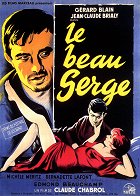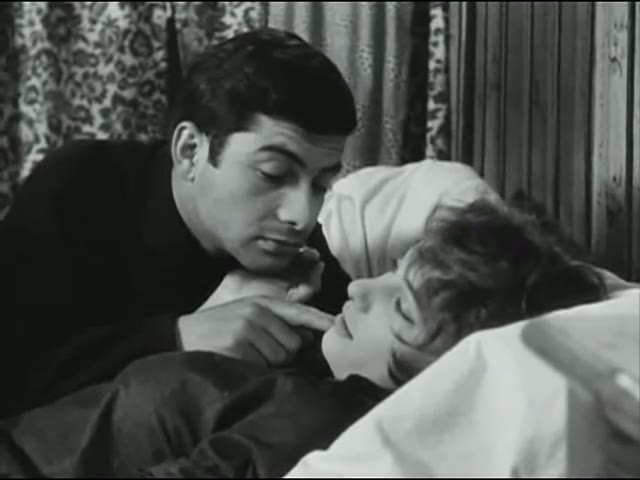Regie:
Claude ChabrolDrehbuch:
Claude ChabrolKamera:
Henri DecaëBesetzung:
Jean-Claude Brialy, Bernadette Lafont, Gérard Blain, Edmond Beauchamp, Philippe de Broca, Claude Chabrol, Claude Cerval, Jeanne Pérez, Michèle MéritzInhalte(1)
In this first feature film of the French New Wave, one year before Truffaut's The Four Hundred Blows, the dandyish François (Jean-Claude Brialy) takes a holiday from the city to his home village of Sardent, where he reconnects with his old chum Serge (Gérard Blain), now a besotted and hopeless alcoholic, and sly duplicitous carnal Marie (Bernadette Lafont). A grave triangle forms, and a tragic slide ensues. (Eureka Entertainment)
(mehr)Kritiken (1)
Like other New Wave debuts, the very first, Chabrol’s, is built on contrasts. The naturalistic acting and the unpicturesque depiction of village reality (whose authenticity is aided by the fact that supporting roles are played by residents of the village of Sardent, where the film was shot and where Chabrol grew up) were enriched with the timeless matters of guilt, betrayal and self-sacrifice, and placed in a melodramatic framework (the highly symbolic final third of the film is even interpreted as merely a vision held by François, who wants to see himself as a saviour). Chabrol’s ambivalent attitude toward Catholicism, blending ironic distance with belief in the necessity of certain moral principles, is manifested in his handling of the film’s central themes. ___ There is also a contrast between Brialy’s thoughtful, intellectual acting and Blain’s raw physical expression. The difference in their performances is partially derived from their characters’ past. Whereas François, who arrives from the city, sees the countryside as an idyllic place and a reminder of his carefree childhood, Serge could never break free from the stagnation of village life and slowly lets it eat away at him from inside (these roles are reversed in The Cousins, with the villager travelling to Paris). He preferred the role of a father, but he failed at that. He lost his motivation to change, hung his head and accepted defeat. Alcohol and the occasional fight are his only means of momentary release. In a broader meaning, Serge personifies the decline of rural France, which began to get back on its feet only in the 1960s. ___ The faithful depiction of the village microcosm is aided by the cinematography of Henri Decaë, who had to learn how to shoot cheaply and quickly through his collaboration with Melville. Le Beau Serge was shot entirely on location, using natural light when possible. The stylistically refined drama outwardly seems very traditional, as if it is related to the aesthetic concept of the neorealists as opposed to an attempt to cut ties with earlier trends. However, Chabrol’s desire to do things his own way, with a greater degree of sincerity and formalistic (self-)consciousness, is evident in the combination of the realistic mis-en-scéne and metaphysical themes, the work with multiple planes of action and the transitions between them (in the mould of Lang and Renoir), the alternating points of view (seemingly subjective shots turn out to be objective), the highlighting of the two men’s different characters through their placement in the shot and the colours attributed to them (black/white) and the “fluid” camerawork creating the impression of smoothly flowing shots (which are often linked by the type of movement found in them). Appendix: The few funny moments in this tragically inclined story include a reference to the group around Cahiers du cinéma – Serge’s two village sidekicks are named La Truffe (i.e. Truffaut, played by Chabrol himself) and Jacques Rivette (played by assistant director Philippe de Broca), thus bringing together four New Wave directors in two characters. 75%
()
(weniger)
(mehr)

